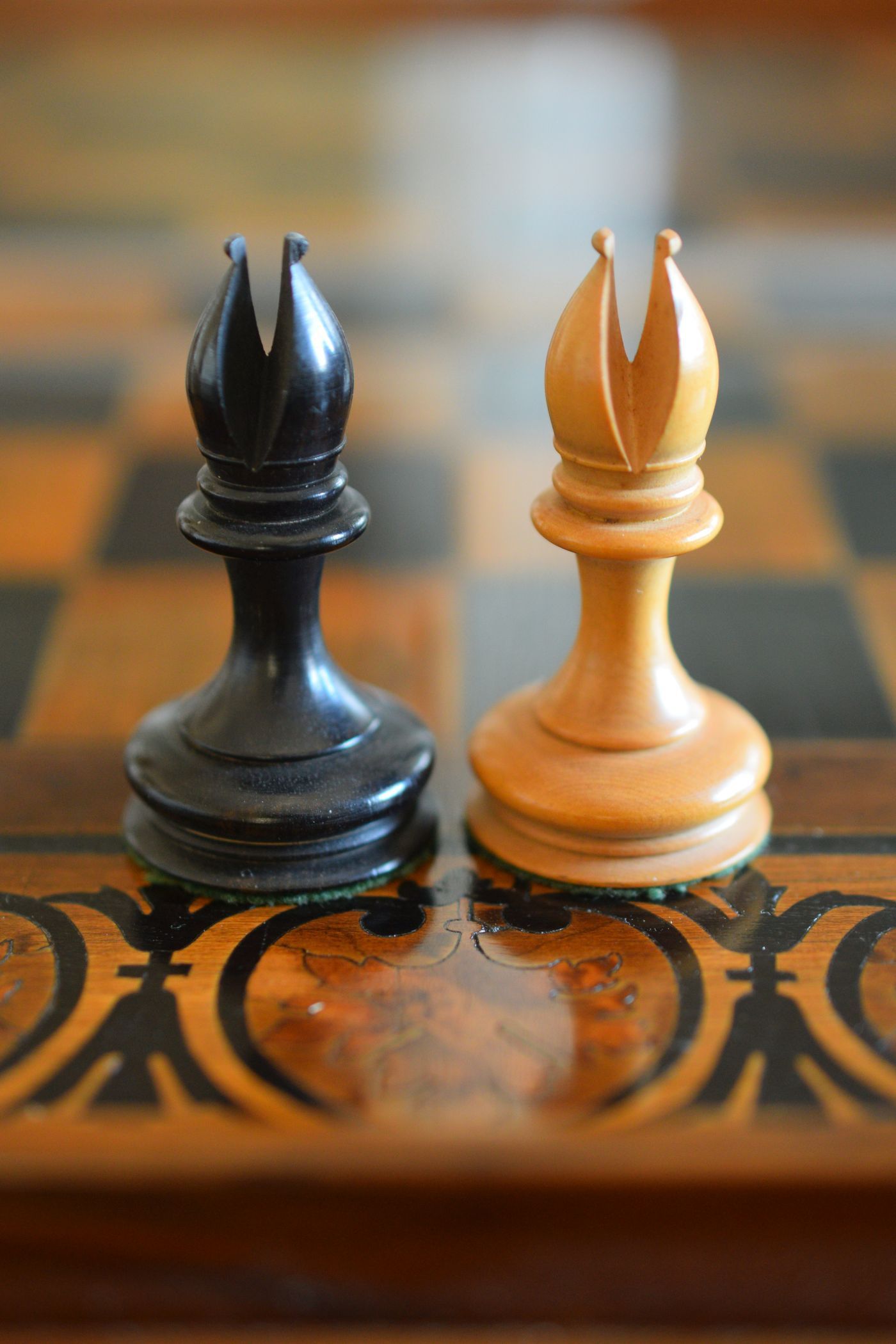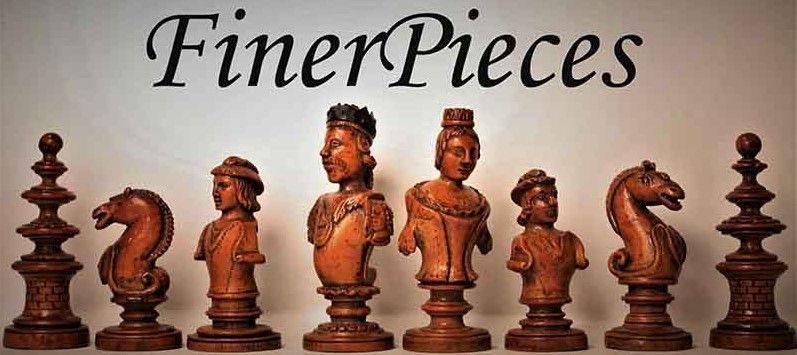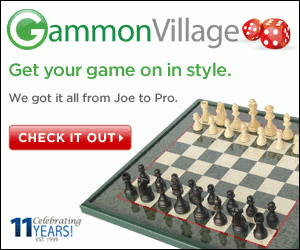English Chess Set attributed to William Hallett, 1825-1850
This chess set represents the stylistic transition to the Staunton design at the end of the second quarter of the 19th century. The pieces are made of boxwood and ebony. The king size is 7.3 cm. It is a set attributed to William Hallett, who is first listed in the London directories in 1832 as an ivory and hardwood turner at 2 New Turnstile, but who was also a brush and comb maker. From 1838 the address given is 83 High Holborn (opposite the George & Blue Boar Inn), under which he is recorded until 1853.
In terms of chess, Hallett is famous as one of the first who sold chess sets in the Edinburgh Upright style, also known as Northern Upright style. Between 17 June 1840 and 10 August 1840, advertisements by Hallett appeared weekly in Mulready envelopes, each with a circulation of 5,000 specimen. In most of these envelopes, Hallett advertises his brushes and combs alongside other merchants and craftsmen. In the last issue of 10 August 1840, however, there is also an advertisement for chess sets. Besides chessmen made of various materials ("Ivory Chessmen, Bone ditto, Box and Ebony...") there is also an entry "Edinburgh pattern".
The pieces in this set are not of the Upright style, but were made in a style of their own. They are altogether less upright and - in this respect similar to the Staunton design with its improved stability - have a relatively broad base that merges into a strongly concave trunk. The king has a serrated crown with a cross finial, the queen a large spherical head, the latter still reminiscent of the previously common shapes in the Old English, St. George and Northern Upright sets. The strongly curved rooks are striking, almost a little reminiscent of the Dublin type in style. There is no hard evidence that Hallett was the maker of these sets. However, the attribution of this type of set to William Hallett can essentially be determined by the knight heads, which have a shape also seen in other sets of Hallett.

































